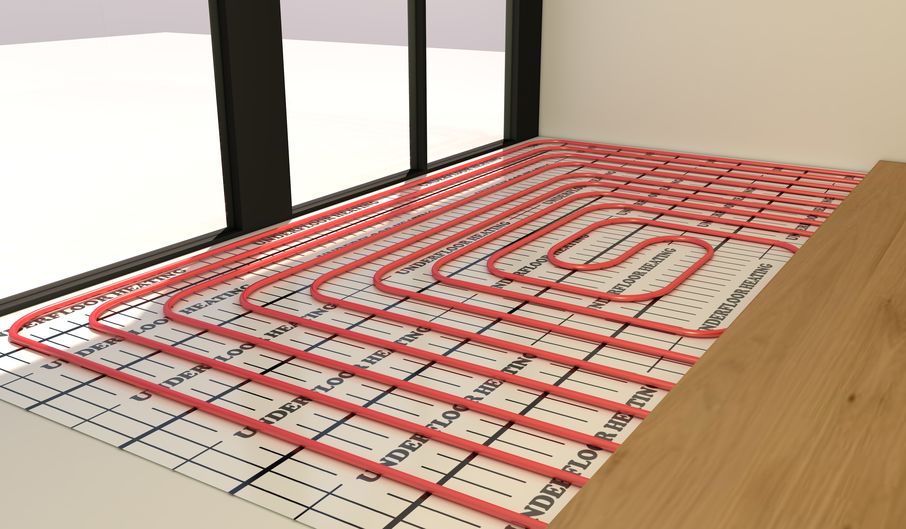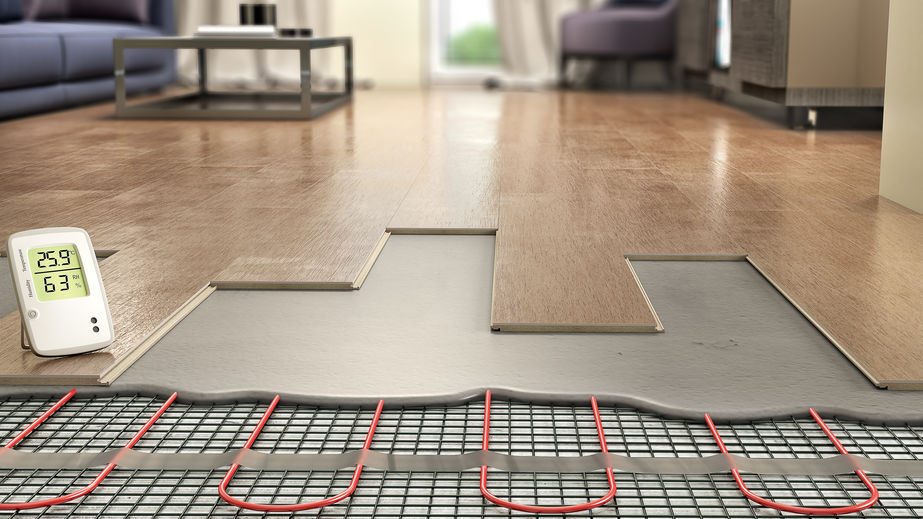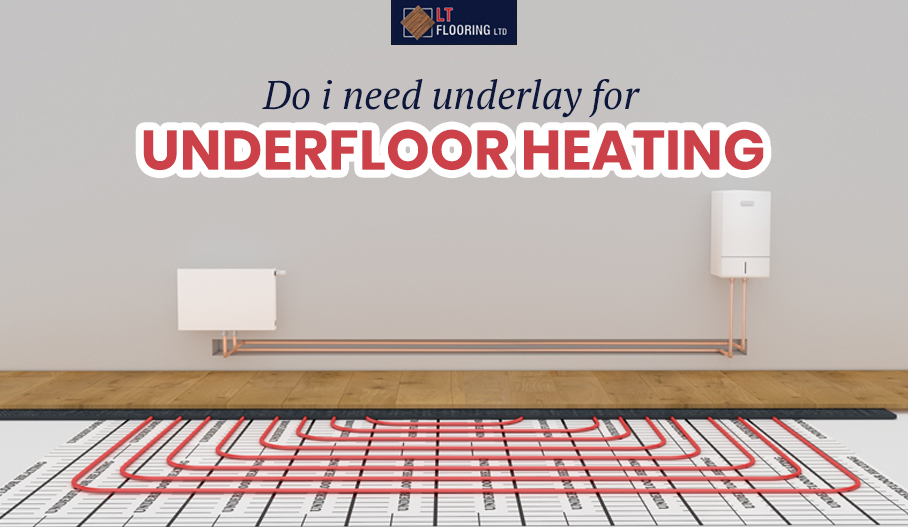If you are considering getting underfloor heating, then you might be wondering if you need to underlay for underfloor heating.
Underfloor heating is a luxury and one that more people are getting in recent years. It brings so much comfort and cosiness to your home, even more so in the winter. You can walk barefoot in total comfort no matter what the weather is like outside.
Before you get your underfloor heating fitted, there are a few things you need to consider. You are going to need to choose the best underlay to enhance the comfort of your flooring. Underlay plays an important role in ensuring you get the most out of our underfloor heating.
The right underlay will increase the effectiveness of your underfloor heating. The style and type of underfloor heating you have, and the material of your flooring, along with the tog rating of your underlay are all critical considerations. You should choose the best underlay for your underfloor heating.
Types of underfloor heating

When considering underfloor heating, you will find that there are three main types of underfloor heating. These include hydronic, also known as wet underfloor heating, forced air underfloor heating, and electric.
Hydronic, or wet underfloor heating, uses a series of pipes. These pipes are laid underneath the floor. Hot water is then pumped throughout the pipe system, and this is what warms your flooring.
Forced air underfloor heating, like its name suggests, uses warm air, which passes through a series of ducts that are allowed under your flooring.
Electric, or dry underfloor heating, uses a conductive cable. These cables are laid underneath your flooring. This is then warmed up by current passing through the wires, much like an electric blanket.
These heating elements are laid in a pattern, onto your subfloor. If you choose to use electric or dry underfloor heating, it is not often recommended that you should use an underlay.
Can underfloor heating go under laminate?

Laminate flooring is one of the most popular floorings in modern times. The permanent covering of your flooring is an incredibly important thing when it comes to selecting at the best underfloor heating underlay.
When it comes to laminate and wood flooring, the best underlay for your circumstances will be Duralay Heatflow. This has a very low tog rating, which means warmth can flow through the flooring very effectively.
The Duralary Heatflow underlay range is known for being exceedingly durable and provides a level of soundproofing. That soundproofing comes with an impact noise rating of a 21 dB.
It is worth noting that the Duralay and Heatflow for wood and laminate flooring, is actually the most ideal for engineered wood floors with underfloor heating.
Which underlay is the best for underfloor heating with carpet?
Carpet is also a common floor covering. So you might be curious as to which underfloor heating on the life of the carpet is the best. In this case, you’re going to be looking at the decking. The ideal underlay for carpet has a low tog rating.
A low tog rating allows the efficient heat transfer through your carpets and into your home. Not only that, but it is an excellent thermal conductor, which means it feels warm throughout. Tredaire King also feels a luxurious underfoot and has a five-star comfort rating.
The Tredair King underlay for carpet, also has a sound installation rating of 42 dB, which will have a significant impact on your noise reduction from your flooring.
There are also Duralay Heatflow carpet underlays and Defender products that will make an excellent choice of carpet underlay with underfloor heating.
What is a tog rating?
You may have noticed that a tog rating is mentioned several times in this article. And you might be wondering what a tog rating is?
When choosing your underlay for underfloor heating, the tog rating matters. The top rating is the thermal resistance of an underlay.
The lower the tog rating of a product, the lower the thermal resistance will be. When you have underfloor heating, the idea is to get as much from that as possible throughout your home. So having a high thermal resistance means that you will not benefit from your underfloor heating.
Low thermal resistance will mean that you can get the full benefit from your underfloor heating. A tog rating of less than 1.0 is typically sufficient for you to enjoy the full benefits of your underfloor heating—however, the lower the top value, the better.
If you have underfloor heating in combination with carpet, this is known as a unique combination. It is suggested that you should have a target talk of 0.8 or less. And if you happen to have a wood flooring installed, then your ideal tog rating is 0.4 or less.
Why Does The Underlay Matter For Underfloor Heating?
An important consideration for the underlay, when you have underfloor heating, is the ability of that underlay to withstand the direct heat from the underfloor heating system. This is a mistake that many people make and purchase a standard underlay.
Unfortunately, it does not have the same function as an underfloor heating underlay. If you happen to choose the incorrect underlay, you will find that it will dry out, or crumble when exposed to heat. It will ultimately cost you more time and money to have this rectified. It is therefore crucial that you seek the right information to help you choose the correct underlay the first time.
Contact us / Call us: 01206 575222
Underfloor heating is an ideal way to keep your home nice and warm over the winter. However, there should be some considerations that you make to you whether you use hardwood flooring up, laminate, or carpet. And, the underlay for underfloor heating is an essential component of those decisions. Once you have decided whether you’re going to have hydronic, forced air, or electric underfloor heating, it becomes much easier to make all of the decisions when it comes to your underfloor underlay.

